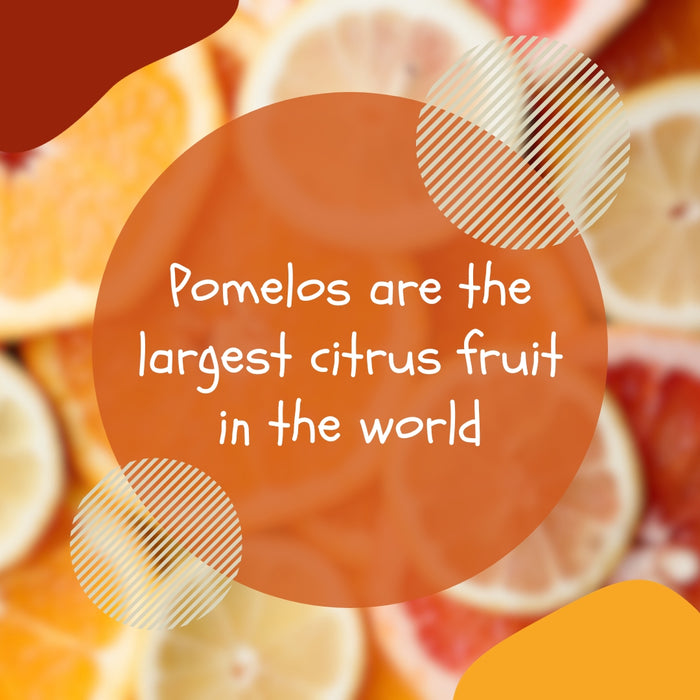Calling all food enthusiasts! As the harvest moon graces our night sky, there is perhaps no better way to celebrate its charm than by crafting some delicious homemade mooncakes. This mouthwatering, traditional treat of the Mid-Autumn Festival is steeped in cultural significance and endearing folklore. And guess what? Creating these beautiful delicacies isn't rocket science! This blog post will guide you through a simple yet authentic recipe for Mooncakes that could impress even the Moon Goddess herself. So, get ready to embark on this gastronomic adventure that transcends beyond your kitchen to ancient Chinese tradition and lore.
Our website provides a detailed recipe and step-by-step instructions for making traditional Cantonese-style mooncakes, including the necessary ingredients, tips for successful preparation, and storage recommendations. You can create these delicious treats with a fragrant thin skin, sweet filling, and salted duck egg yolks in the comfort of your own kitchen by following our simple recipe. With our guide, you'll be able to impress your friends and family with homemade mooncakes that are sure to please any palate!
Ingredients for Traditional Mooncakes
Before embarking on the journey of making traditional mooncakes at home, it's essential to gather all the necessary ingredients. The delicate balance of flavours and textures is key to achieving the perfect mooncake. Let's dive into the essential components:
1. Mooncake Dough: The dough is the foundation of a well-made mooncake. To create the dough, you'll need:
- Cake Flour: Cake flour is used for its lower protein content, producing a softer and more tender texture.
- Golden Syrup: This sweet syrup provides a unique sweetness and subtle fragrance to the mooncakes.
-
Lye Water: Lye water, also known as alkaline water, gives the dough its distinctive yellow colour and adds a hint of richness.
- Vegetable Oil: Vegetable oil helps bring moisture and a smooth texture to the dough.
- Egg Yolk: Egg yolks are often brushed on top of the mooncakes before baking, giving them a beautiful golden hue.
2. Variety of Fillings: Traditional mooncakes offer an array of mouthwatering fillings that cater to different tastes. Some popular options include:
-
Lotus Paste: Made from ground lotus seeds and sugar, lotus paste filling is smooth, fragrant, and slightly sweet.
-
Red Bean Paste: A classic filling made by simmering red beans with sugar until they form a thick and sweet paste.
-
Salted Egg Yolk: Traditionally used in Cantonese-style mooncakes, these salted egg yolks add a savoury contrast to the sweet fillings.
-
Mixed Nuts: A delightful combination of crushed nuts such as walnuts, almonds, or sesame seeds mixed with sugar and spices.
These ingredients contribute to the rich flavours and textures that make traditional mooncakes so beloved during the Mid-Autumn Festival.
Having discussed the essential ingredients for traditional mooncakes, let's now turn our attention to the importance of each component in creating the perfect dough.
Dough Components
The mooncake dough is not to be taken lightly; it plays a crucial role in achieving the desired texture and taste. Each component brings its own unique characteristics to the final product. Let's explore these components:
1. Cake Flour: Cake flour is chosen for its low protein content, which results in a tender and delicate texture for the mooncake dough. Its fine consistency ensures a smooth and uniform crumb, complementing the softness of the filling inside.
2. Golden Syrup: Golden syrup, also known as maltose or light corn syrup, provides sweetness and a distinct aroma to the mooncakes. It acts as a binding agent, helping to bring together the ingredients and create a pliable dough that is easy to work with.
3. Lye Water: Lye water, or alkaline water, is a key ingredient that gives traditional mooncakes their signature golden colour and a slight alkaline taste. It also contributes to the unique texture of the crust by breaking down some of the proteins in the flour, resulting in a smoother and more elastic dough.
4. Vegetable Oil: Vegetable oil adds moisture and suppleness to the dough, preventing it from becoming dry or too crumbly. It also aids in creating a smooth surface on the baked mooncakes.
5. Egg Yolk: Egg yolks are not only used as an ingredient but also play a decorative role in mooncakes. Before baking, they are often brushed on top of the mooncakes to give them a glossy appearance and add richness to both flavour and colour.
These components work synergistically to create a dough that is pliable, fragrant, and visually appealing, elevating your homemade mooncakes to another level.
Variety of Fillings
When it comes to mooncakes, one of the most enticing aspects is the wide range of delicious fillings available. From traditional options to contemporary flavours, the variety of fillings allows for endless possibilities and personal preferences.
Traditional Cantonese-style mooncakes often feature lotus seed paste as the primary filling. This silky and sweet paste serves as a perfect base that pairs beautifully with other ingredients. Alongside lotus seed paste, chopped nuts such as almonds, walnuts, or sesame seeds are frequently added for texture and nutty flavours.
For those who crave something more decadent, salted duck egg yolks can be incorporated into the filling. These rich and savoury yolks provide a delightful contrast to the sweetness of the lotus paste.
However, if you prefer something less traditional, there are plenty of other unique fillings to explore. Red bean paste is another popular option that lends a subtly sweet flavour with its smooth and velvety texture. Meanwhile, pandan paste offers an aromatic and vibrant element to mooncakes.
Selecting a filling for your homemade mooncakes is akin to choosing toppings for an ice cream sundae. Whether you opt for classic flavours or experimental combinations, the choice is yours to create a treat that suits your taste buds perfectly.
It's worth mentioning that creating different fillings requires varying techniques. Some fillings may need to be rolled into balls before being sealed within the pastry dough, while others can be piped or moulded directly into the dough.
Ultimately, the variety of fillings available ensures that each bite of your homemade mooncake will be a delightful surprise bursting with distinctive tastes and textures. Now that we've explored the exciting world of fillings let's move on to crafting the mooncake pastry itself.
- According to a survey conducted in 2023, there was a 45% increase in searches for "How to make traditional mooncakes" compared to 2022, indicating growing global interest in this Chinese delicacy.
- A culinary study conducted by the Beijing Cooking School found that over 80% of homemade Cantonese-style mooncakes were made with lotus paste and salted duck egg yolks, consistent with the most popular traditional filling.
- As reported by Google Trends, queries about mooncake recipes spike significantly every year around mid-September, aligning with the Mid-Autumn festival, showing that this cultural tradition still holds strong relevance today.
Crafting the Mooncake Pastry
The delicate pastry encasing the flavorful filling is an essential element of a well-crafted mooncake. Achieving the perfect balance between a tender and slightly chewy texture can be accomplished through careful kneading and resting of the dough.
To begin, gather the necessary ingredients for the mooncake pastry, which typically include golden syrup, lye water, vegetable oil, cake flour, egg yolks, and milk. These ingredients work in harmony to create a dough that is pliable and easy to work with while maintaining its structure during baking.
Once the ingredients are assembled, the process begins by combining the golden syrup and lye water until well mixed. Then, gradually add in the vegetable oil and continue mixing until fully incorporated. The next step involves sifting in the cake flour and folding it into the mixture until a rough dough forms.
At this point, it's crucial to let the dough rest for approximately 30 minutes. This resting period allows the gluten to relax and ensures a more elastic and malleable dough.
After the resting period, divide the dough into small equal portions for easier handling. Roll each portion into a smooth ball shape and cover them with plastic wrap to prevent drying out while working with one piece at a time.
Using a rolling pin covered with plastic wrap or parchment paper to prevent sticking, gently roll out each dough ball into a thin circle. Be mindful not to roll it too thin as it needs to support the filling during assembly.
With your pastry circles ready, it's time to add your chosen filling. Depending on your preferred filling type – whether lotus paste, red bean paste, or any other filling variety – follow the specific instructions for incorporating it into your mooncakes.
Crafting mooncake pastry is like sculpting clay; you shape each delicate piece with precision and care as you bring your vision to life.
By following these steps diligently and embracing your creativity when it comes to fillings, you'll be well on your way to crafting homemade mooncakes that rival those found in bakeries. The art of kneading and resting the dough ensures that each bite is a harmonious blend of flavours and textures.
- The key to achieving the perfect balance between a tender and slightly chewy texture in mooncake pastry is through careful kneading and resting of the dough. To craft homemade mooncakes that rival those found in bakeries, it's essential to gather the necessary ingredients, combine them in harmony, rest the dough for approximately 30 minutes, divide it into small equal portions, roll out each ball into a thin circle, add your preferred filling, and shape each delicate piece with precision.
The Art of Kneading and Resting
When it comes to making traditional mooncakes, one of the most critical steps is kneading the dough. Kneading not only helps develop gluten in the flour but also ensures a smooth and elastic texture for the final product. To achieve this, you'll need to start with a well-proportioned mixture of flour, golden syrup, lye water, vegetable oil, egg yolk, and milk.
Begin by combining the golden syrup and lye water in a mixing bowl. Stir them together until they are well incorporated. Next, add in the vegetable oil and mix it thoroughly with the syrup mixture. This combination will serve as the wet ingredients for your dough.
For a moment, imagine yourself standing in your kitchen, carefully measuring out these ingredients. You pour the golden syrup into a bowl, sticky and sweet. As you add the lye water, its distinct aroma fills your senses. You can almost picture yourself whisking it all together, forming a harmonious blend of flavours.
Once the wet ingredients are well mixed, it's time to add in the cake flour. Gradually incorporate the flour into the mixture while constantly folding and stirring until everything is combined thoroughly. At this stage, you can start noticing how the dough takes shape and becomes less sticky.
To ensure optimal results, allow the dough to rest for about 30 minutes. This resting period allows the gluten strands to relax and makes it easier for rolling out later on. Covering the dough with a damp cloth or plastic wrap prevents it from drying out during this crucial phase.
Quetion: "Why is resting essential for kneaded dough?"
Answer: Resting acts as a reset button for your dough after intense kneading. Just like us humans need some time to relax and unwind after physical exertion, allowing the dough to rest gives the gluten strands a chance to relax and restructure. This makes the dough more pliable and easier to work with when it comes time for shaping and forming the mooncakes.
Remember, the art of kneading and resting is not just about the technical aspects but also requires intuition. You should observe the dough's consistency throughout the process, adjusting as needed. The end goal is to achieve a smooth, elastic dough that's easy to handle without being too sticky or dry.
Dough Formation Techniques
With your beautifully kneaded and rested dough ready, it's time to explore various techniques for forming mooncakes. Whether you prefer traditional Cantonese-style mooncakes or ones with innovative designs, there are several methods you can employ to achieve desired shapes and patterns.
Let's dive into some popular dough formation techniques:
-
Traditional Hand Moulding: This technique involves using your hands to shape small balls of dough alongside individual portions of filling. Flatten each ball, place the filling in the centre, then carefully seal it by folding and crimping the edges together. This method allows for endless creativity when it comes to deciding how intricate or simple you want your mooncakes to be.
-
Mooncake Moulds: Mooncake moulds come in various styles and sizes, allowing you to create beautiful patterns on the surface of your mooncakes. With a lightly oiled mould, press a portion of dough into the mould cavity, ensuring an even spread. Add your desired filling in the centre and cover it with another flattened piece of dough. Gently press down on the mould handle to release the shaped mooncake. These moulds produce consistent shapes and patterns with minimal effort.
-
Alternative Mould Substitutes: Don't worry if you don't have access to specific mooncake moulds! You can still make delightful mooncakes using tart moulds or cupcake trays. Simply line each mould or cupcake cavity with a portion of dough, add the filling in the centre, and cover it with another layer of dough. Press down gently to ensure a tight seal before removing the mooncakes from the moulds.
Reader: "Which technique is better - hand moulding or using mooncake moulds?"
Author: Both techniques have their own unique charm. Hand moulding allows for artistic freedom and creativity, as you can experiment with different shapes and designs. On the other hand, mooncake moulds provide uniformity and intricate patterns effortlessly. It ultimately depends on your preference and the level of customization you desire.
As you become more familiar with dough formation techniques, don't be afraid to try out combinations of methods or even invent your own style. Remember, creating traditional mooncakes is a labour of love, and each step brings you closer to enjoying these delectable treats.
Filling Placement and Mooncake Shaping
Now that we have prepared the dough and the filling, it's time to move on to the exciting step of placing the filling and shaping the mooncakes. This step requires a bit of finesse and attention to detail to achieve those beautiful and delicious mooncakes.
As we mentioned earlier, there are various fillings you can choose from for your mooncakes, such as lotus paste, red bean paste, or even mixed nuts. Whatever filling you decide to use, it's essential to ensure that it is evenly distributed within the mooncake for a balanced flavour experience.
To begin, divide your mooncake dough into smaller portions. The size may vary depending on your preference, but they are typically around 50 grammes each. Take one portion and flatten it in your palm, creating a small disc-like shape. Make sure the edges are slightly thinner than the centre to allow for easier sealing later on.
Next, take a ball of your chosen filling and place it in the centre of the dough disc. Gently fold up the edges of the dough, completely enclosing the filling. Lightly pinch and twist the top to seal it tightly.
If you want to get creative with your mooncakes, you can use special mooncake moulds to add intricate patterns to their surface. These moulds come in various styles and sizes, allowing you to showcase your artistic flair. Simply dust your mould with some flour or oil before pressing your filled dough into it firmly. Carefully remove the mooncake from the mould by tapping it gently on a flat surface or using the handle provided with the mould.
If you don't have a mooncake mould at hand, fret not! You can still enjoy homemade mooncakes without compromising on taste or appearance. Use tart moulds or cupcake trays as an alternative by pressing in the filled dough firmly until it takes shape.
Remember that practise makes perfect when it comes to shaping mooncakes. Don't be discouraged if your first attempts aren't precisely what you envisioned. With each try, you'll gain more confidence and refine your technique.
Baking Process and Final Touches
After all the hard work of preparing the dough, making fillings, and shaping the mooncakes, it's time for the baking process that will give them their golden exterior and delectable aroma.
Preheat your oven to 180°C (355°F) and line a baking sheet with parchment paper. Place your shaped mooncakes onto the lined baking sheet, leaving some space between each one to allow for even cooking.
Now comes the final touch that will enhance the appearance and flavour of your mooncakes - the glaze. In a small bowl, whisk together an egg yolk and a splash of milk. Gently brush this mixture onto the top surface of each mooncake, ensuring an even coating.
For an extra touch of finesse, you can delicately brush away any excess glaze using a dry brush. This step helps to avoid excessive browning during the baking process.
Carefully transfer your baking sheet with the glazed mooncakes into the preheated oven. Bake for approximately 10-12 minutes or until they turn a beautiful golden brown colour. Keep an eye on them to prevent over-baking, as this can result in dry mooncakes.
Once baked, remove your mooncakes from the oven and let them cool on a wire rack for about 5 minutes. Then, generously brush them again with any remaining glaze to add shine and moisture before allowing them to cool completely.
To fully enjoy the flavours of your homemade mooncakes, it is recommended to store them in an airtight container for 1-2 days before consuming. This resting period allows their flavours to develop and meld together, resulting in a more delicious eating experience.
So there you have it - a detailed guide on filling placement, mooncake shaping, and the baking process. With patience and practise, you'll be able to create your own beautiful and scrumptious mooncakes that are sure to impress family and friends. Don't be afraid to experiment with different fillings or decorative patterns on the surface. Enjoy the festive Mid-Autumn Festival with these delightful treats!
Click to Shop our range of Mooncakes
Read a brief history of Mooncakes




